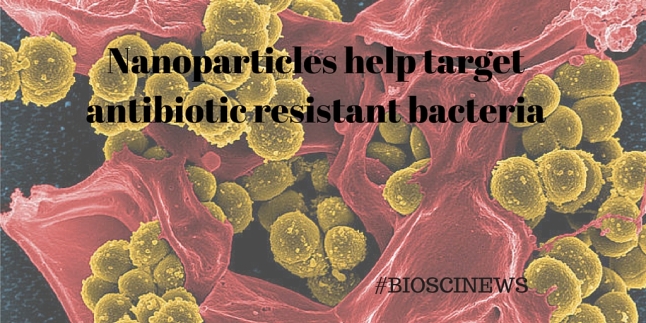Hello, and welcome to the #bioscinews round-up! This is the place where you can find all the important biosci new stories from the past week, in a short, digestible paragraph.
The start of the year is always a busy one, with having to settle back into work/studies and coming to terms with the fact that the next major holiday is months and months away (weep), so hence this post will be a whole month’s news round up instead of a weekly news round-up. We shall get back to the weekly news round-ups next week! Until then, enjoy what January had to offer…
This month’s news
The mummified remains of “Ötzi the Iceman” were originally found in the Austrian alps in 1991, but continue to provide fascinating insights into the lives of the Chalcolithic Europeans. These Europeans lived during the Copper Age, the beginning of the Bronze Age, around 3000-5000 years ago. The most recent study to focus on Ötzi has revealed that, at the time of his death, he had a strain of the Helicobacter pylori (H. pylori) bacteria in his stomach. H. pylori is linked to severe inflammation in the digestive system and can lead to certain cancers. However, it does not match the strain which currently tends to inhabit European stomachs. The authors suggest this may reveal new findings concerning human migration patterns at the time and, while the discovery is exciting, caution must be taken when drawing conclusions from a single data point.
In further human evolution news, there may be links between Neanderthals and our immune systems. Comparisons between human (Homo sapiens) and Neanderthal genomes has suggested that some of our immunological genes came from interbreeding with Neanderthals. These genes – known as the Toll like receptor family – are important for our innate immune system, which initially mounts a defensive response to pathogens. The innate immune system is also largely involved in allergic responses. So, thank our predecessors for our ability to respond to infections rapidly, but you can also silently curse them next time your hay fever acts up!
In some slightly stranger insect-related news, to confirm that praying mantises do see in 3D and to create a system to confirm the same in other insects, scientists from the UK and France have created 3D glasses for insects. The glasses are similar to the red-green plastic system that was commonly used in the 80’s and 90’s for movies, but different colours were used. Since insects’ eyes are sensitive to different wavelengths than human eyes, the authors used green and blue plastic lenses instead of the traditional red and blue. While this is a strange set-up for sure, maybe it will help us learn more about insect vision in the near future! The images are pretty cool to look at too…

Newcastle University research into 3D vision in praying mantises by Dr. Vivek Nityananda.
Pic: Mike Urwin. 151015
Explaining the evolutionary origins of life is still an active pursuit by biologists, but we now have more insight into how life became multicellular. In order to become a multicellular organism, some form of organisation is required. For this, cells take advantage of some structures involved in cell division, the mitotic spindles. These are fibres which are involved in separating the chromosomes (or DNA) of cells when they replicate and divide. Recent work has helped to explain how this complex system was adapted into a system to help organise multicellular life. A single mutation seems to be responsible, for co-opting this system of cellular organisation into one for organismal organisation. The article is rather technical, but is an excellent example of evolutionary modifications.
Scientists have always been interested in the diversity of lifeforms on Earth, and this month a new interesting puzzle was discovered. Often, the same genetic background can result in many different body forms (called phenotypic plasticity), but this worm puts other phenotypically plastic organisms to shame. It produces five different forms from the same genes! The worms are often found in figs, and now we know they have five different physical forms depending on which species of fig they inhabit.
Antibiotic resistance is a problem our news digests have covered before, and this issue continues to concern scientists and medical professionals the world over. Nanoparticles are tiny particles which have been considered for use against bacteria previously, but they have some issues: they are not cell selective. So, if you were to treat a patient with specific nanoparticles that can ‘destroy’ foreign cells, they would also destroy their own cells, which is of course not a good way to treat a bacterial infection. Recent work, however, shows promise in designing more specific nanoparticles to specifically target bacterial cells and leave our own healthy cells undamaged. Hopefully nanoparticles can be added to our arsenal against bacterial infections some time soon!
We all probably know by now that we are host to many organisms apart from ourselves, from beneficial bacteria, to mites in our eyelashes. But maybe you haven’t given much thought to who you share your house with? Well, these scientists were curious about what might be lurking about the average house. They surveyed 50 different houses in California and found a remarkable diversity of Arthropods (the Phylum which includes insects), with up to 200+ species in a single house! But don’t worry, the most abundant arthropods found were all completely harmless.
At school, we all learned that lizards and other reptiles were cold-blooded, that is, they need to absorb heat from their environment as they do not produce their own bodily heat like humans do. But, I guess we also all learned that, at some point in life, that there is always an exception to every rule. Well, we’ve finally found the exception to the cold-blooded lizards. The Tegu lizard, native to South America, has been found to produce some bodily heat in certain seasons. We don’t know how they do this yet, but it has been suggested that they increase the activity of certain organs, like the heart or the liver, to produce extra heat during the breeding season. The more in depth we study nature, the more strange and fascinating it gets!
Our final news story for the month is potentially very exciting for age-related blindness. Retinitis Pigmentosa (RP) is a gradual blindness that progresses with age, and current treatments only manage to slow the decline in vision. We know which gene is responsible for this condition, but so far, efforts to restore the function of this gene have not been very successful. Some new work making use of CRISPR gene editing technology may provide some hope however. Previous gene therapy efforts have focused on introducing some separate functional copy of the gene in question, but often this replacement copy degrades over time and the therapeutic effects go with it. With CRISPR, we can take out the defective copy of the gene, and replace it with a functional copy which will last longer and prevent disease progression. However, this work has only been done in rats, and CRISPR technology is currently not approved for therapeutic applications in human tissue. Besides that, CRISPR is also embroiled in a copy-right dispute at the moment, so it may be a while before we know if this can be applied in a clinical setting.
We hope you enjoyed this month’s news round-up, thanks for reading!
—
Devon Smith, The University of Sheffield, @devoncaira
Julie Blommaert, The University of Innsbruck, @jblommaert92








